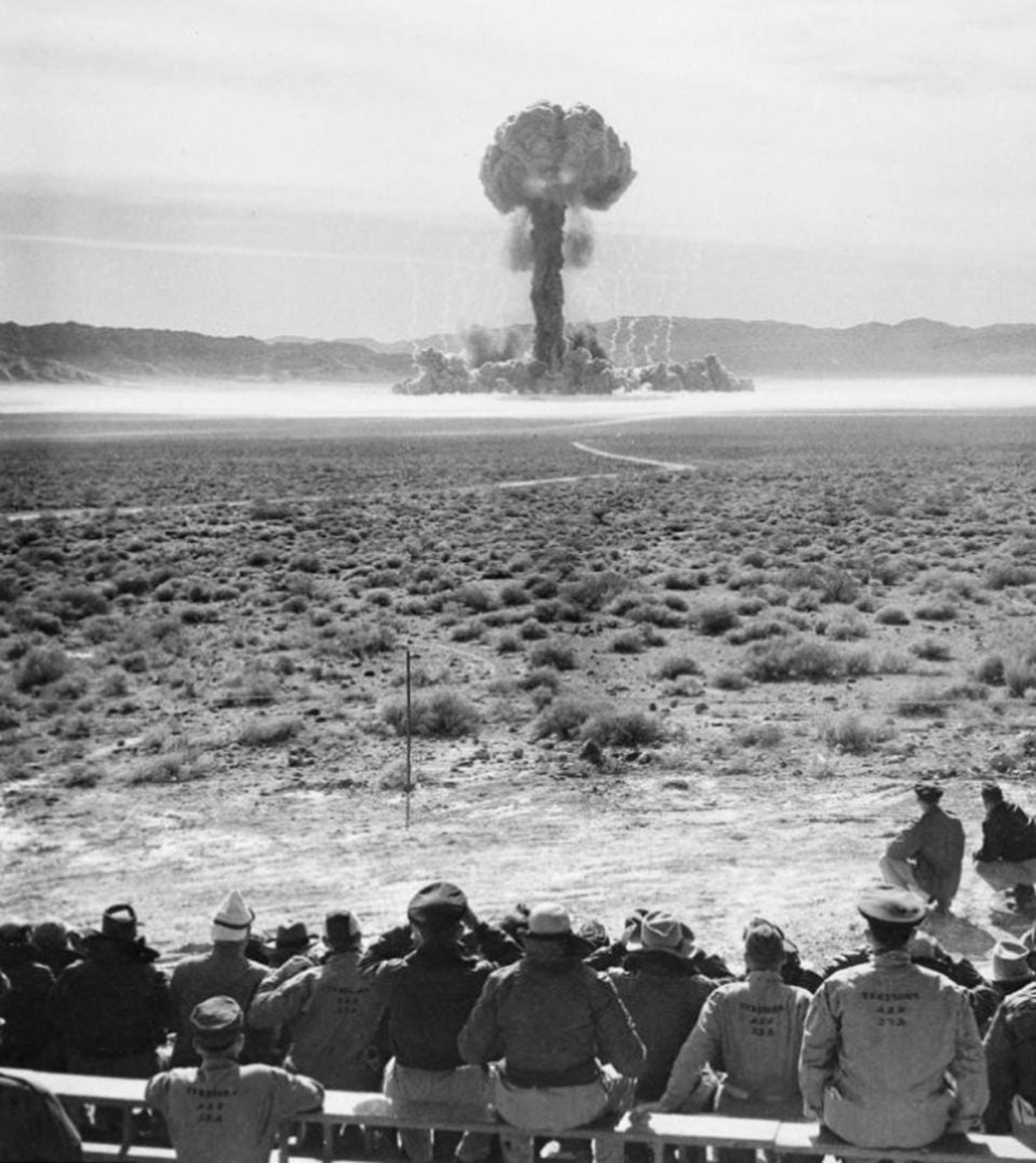The first sector of the ITER vacuum vessel was placed in the assembly pit in May. Here, a technician positions targets on the surface of the component to be used in laser metrology. (Photo: ITER Organization)
Delivery of electricity from fusion is considered by the National Academies of Engineering to be one of the grand challenges of the 21st century. The tremendous progress in fusion science and technology is underpinning efforts by nuclear experts and advocates to tackle many of the key challenges that must be addressed to construct a fusion pilot plant and make practical fusion possible.
The NS Savannah—the first merchant ship powered by a nuclear reactor.
The American Bureau of Shipping (ABS) has announced the launch of a research project that will look into barriers to the adoption of advanced nuclear propulsion for commercial vessels.
The $794,000 project, awarded to ABS last year by the Department of Energy’s Office of Nuclear Energy, is now being formally contracted through the DOE’s U.S. Industry Opportunities for Advanced Nuclear Technology Development funding opportunity, according to ABS’s August 17 announcement. Support is to be provided by Idaho National Laboratory’s National Reactor Innovation Center (NRIC).
The session hall of the Batasang Pambansa Complex in Quezon City, the seat of the Philippines’ House of Representatives.
The Philippines’ House of Representatives has established a special 25-member committee to focus on nuclear energy.
Within the committee’s purview, according to an August 9 release from the House’s Press and Public Affairs Bureau, are “all matters directly and principally relating to the policies and programs to the production, utilization, and conservation of nuclear energy, including the development of nuclear power infrastructure, as well as interaction of other energy sources with nuclear energy as a reliable, cost competitive, and environment-friendly energy source to ensure energy security consistent with the national interest and the state’s policy of freedom from nuclear weapons.”
The Neckarwestheim nuclear power plant in Germany.
For the few members of the nuclear community who haven’t already been made aware, the Wall Street Journal yesterday published a story headlined “Germany to Keep Last Three Nuclear Power Plants Running in Policy U-Turn.” According to the WSJ, the German government plans to postpone retirement of the plants—all of which had been slated for closure by the end of 2022—fearing an inadequate energy supply this winter.
The Diablo Canyon nuclear power plant.
There is still a chance for California’s last remaining nuclear power plant to stay open.
Last Friday, more than 50 nuclear advocates testified in support of the Diablo Canyon nuclear power plant at a California Energy Commission workshop. Many spoke of the need for California to shore up its electricity grid in the face of coming heat waves and power outages. Others emphasized that closing the plant, which generates 2.2 GW of electricity and currently provides 8.6 percent of the state’s total supply and about 15 percent of its low-carbon electricity, would be devastating to California’s emission-reduction goals.
Research being done at INL’s Energy Systems Laboratory is providing information on how nuclear power plants can contribute to effective energy storage and discharge, to aid in arbitrage. (Photo: INL)
Can nuclear power plants prosper in the grid of 2030 or 2035, when new wind and solar farms will make electricity prices even more volatile? Can plants install energy storage that will help them keep running at full power, 24/7, to ride out times of surplus and sell their energy only when prices are high?
A stylized image of a cryogenic target used in NIF experiments. (Image: James Wickboldt/LLNL)
A map showing the location of Powertech USA's Dewey Burdock site in South Dakota. (Image: NRC)
In the latest episode of a years-long dispute, the D.C. circuit court has denied a petition to reverse the Nuclear Regulatory Commission’s 2014 decision granting a license to Powertech USA for uranium extraction at its Dewey Burdock site, the company’s parent, enCore Energy, announced yesterday.
NNSA administrator Jill Hruby (right) and Ken Nakajima, director of the Institute for Integrated Radiation and Nuclear Science at Kyoto University, in the KUCA control room. (Photo: NNSA)
The Olkiluoto nuclear power plant in Finland. (Photo: TVO)
Teollisuuden Voima Oyj (TVO), owner and operator of the Olkiluoto nuclear power plant in Finland, has resumed Olkiluoto-3’s test production phase, following completion of maintenance and repair work at the new reactor’s turbine island, the company announced this week.
TVO had announced in June a delay to the unit’s commercial start of some three months—from September to December—after material that had detached from the steam guide plates was found in the turbine’s steam reheater in May, necessitating repair work and a halt to testing.
The Grand Gulf nuclear power plant. (Photo: Entergy)
While the Mississippi Public Service Commission earlier this year accepted a $300 million offer from Entergy Corporation to settle its portion of a multistate dispute with the utility over Grand Gulf nuclear plant customer rate impacts, the Arkansas Public Service Commission last week turned down its own $142 million offer, terming it “a low-ball amount.”
A release box containing about 15 million sterile male fruit flies is loaded into a Cessna aircraft for release over Colima, Mexico, earlier this year. (Photo: DGSV SENASICA)
Mexican authorities announced last week that the Mediterranean fruit fly, more commonly known as the medfly, had been successfully eradicated in the state of Colima using a nuclear technique described by the International Atomic Energy Agency (IAEA) as “birth control for pests.” Mexico used the sterile insect technique (SIT) in cooperation with the IAEA and the Food and Agricultural Organization of the United Nations (FAO) to protect fruit and vegetable crops, farmers’ livelihoods, and the country’s economy.

















